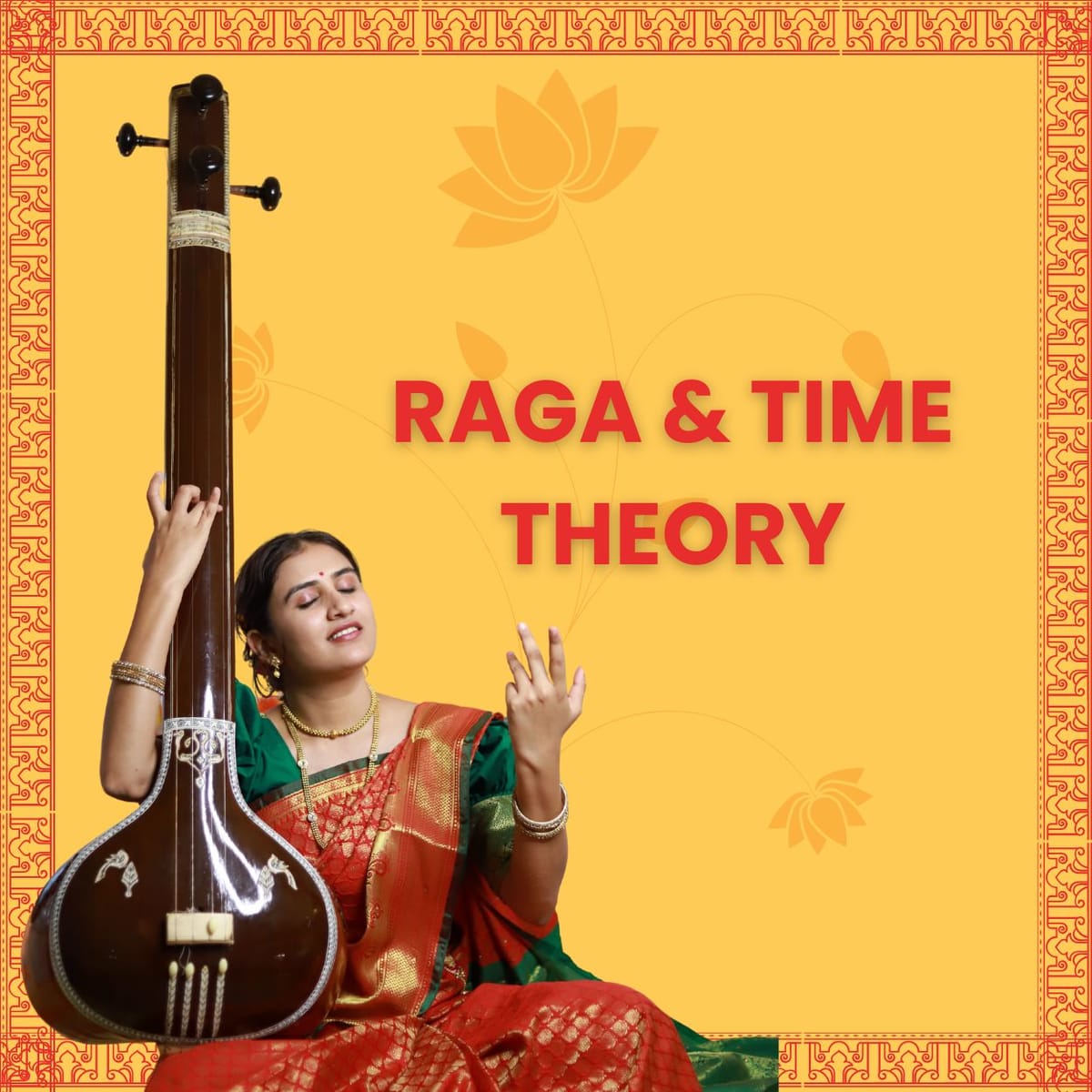
Table of Contents
According to the theory of music as followed in India, certain ragas which are the special feature of Indian classical music are associated with particular seasons and particular times of the day and the night and this theory is called the ‘Time theory of Ragas’.
Singing certain ragas in the prescribed time will help to create the specific mood/emotion/expression of the raga.
The time theory was even followed during the vedic period and is not the recent development. Several hymns were earmarked for morning, noon and evening.
- In the morning the vedas should recite with low notes of chest.
- At noon the vedas are recited from the throat.
- And in the night, the higher notes/tharasthayi swaras.
In the ancient system i.e. before bifurcation there were certain classification of ragas. Among them a division of ragas to male and female holds a unique place.
1. List of Ragas & Raginis with time prescribed
2. Time Theory of Ancient Tamil Music
The time theory of raga is prevalent in ancient Tamil music also. It is found that rules relating to ganakala were fixed as early as 1st & 2nd CA. Sargam literature works like, Chilappathikaram, Purananuru, Thevaram, etc…contains detailed description of the classifications of ragas according to ganakala niyamas. Backland division is associated with a particular season and particular Pann.
The Tevaram panns were classified as Pakalpann (daytime), Irav pann (night time) and Podupann (sarvakalika ragam). Of the 24 panns, 12 were pakalpanns, 9 were iravupanns and 3 were podupanns.
a. Podupann
- Senjurutti (Madhyamavathi)
- Sewazhi (Yadukula kamboji)
- Thiruthandakam (Begada)
b.Iravupanns
- Pazham Takka (Sudha saveri)
- Kolli (Navroj)
- Kurinji (Malahari)
- Andali Kurinji (Sama)
c. Pakalpann
- Kausikam (Bhairavi)
- Puranirmay (Bhoopalam)
- Panchamam (Ahiri)
- Indalam (Hindolam)
- Nagapathai (Nattai).
3. Time Theory in Hindustani music
The North Indian musicians are their present classification of Ragas based on time to Pandit V N Bhatkande in the Sanskrit book, Lakshya sangeetha, Bhatkande describes different classification of ragas on the basis of time singing. They are;
4. According to Purvanga and Utharanga
Before explaining about Purva raga and Uthara raga, let us divide the 24 hours of a day into two. The first part is the time between 12 noon to 12 midnight. The second part is the time between midnight to 12 noon. In this, Purva raga is included in the first part and Uthara raga in the second part.
According to Vadi swara of a raga, ragas are divided into two. Purvanga Vadi and Utharanga Vadi. In a grant, the first 4 swaras S, R, G, M included in Purvanga and remaining 4 swaras P, D, N, S included in Utharanga. If the Vadi swara of a raga comes in Purvanga, it is called Purvanga Vadi raga and if the vadi swara of a raga comes under Utharanga, it's called Utharanga vadi raga.
Example
- Khamaj - (Vadi swara - G) - Purvanga vadi raga.
- Bhairav - (Vadi swara - D) - Utharanga vadi raga.
5. Sandhiprakasa ragas
These are ragas usually sung or played at twilight (R and D - Komal swaras)
There are only very countable musicians in the world who are using the time theory in present day music to express the exact emotions of the raga. But we can execute a composition even if we are not following this theory.
Learn these theories and so much more about Hindustani Music and Carnatic Music with us!
Written by,
Anagha Murali
Carnatic Vocal & Playback Singing SME
